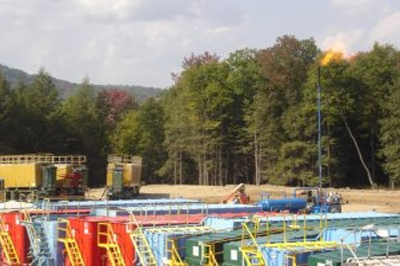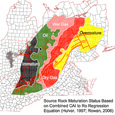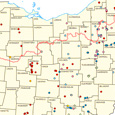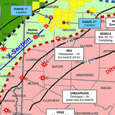The impact of Marcellus Shale development on health and health care
Tuesday, January 6, 2015

From Penn State Natural Gas News
The Center for Rural Pennsylvania commissioned a Marcellus Shale Impacts study, the second looking at health and health care.
Little is known about the potential human health effects of Marcellus Shale drilling and related development activities. It is likely that different phases of drilling and development may affect human health differently; some aspects of drilling may impact health directly, and other health effects may be indirect.
This research examines changes in healthcare services, the use of healthcare services, reported injuries, and emergency medical service complaints in the four study counties (Bradford, Greene, Lycoming, and Washington) before and after the start of Marcellus Shale development; across regions; and across varying degrees of intensity of Marcellus Shale development. The objective was to determine if incidences of certain health status indicators and demand for healthcare services changed in the study counties during the years that Marcellus drilling activity increased. The quantitative data were supplemented with information obtained from regional focus groups held with health, housing, and human service professionals. This research is exploratory and should not be treated as conclusive. However, it provides the basis for additional research to determine the relationship
of Marcellus Shale development to health and health services use.
Results indicated that:
•While all counties and regions are served by general acute care hospitals, the level of service by “safety net providers” varies. The numbers of these providers does not seem to be associated with a change in population overall but may reflect an increase in the uninsured population in certain counties.
•Inpatient hospitalizations in the four counties and the two regions increased slightly in the northern tier and decreased slightly in the southwest, but it is not possible to directly connect this to Marcellus Shale drilling.
•Access to primary care providers was and continues to be an issue and the demand for mental and behavioral health services has increased as have the inter-agency strategies for addressing this need.
•The percentage of uninsured residents was at or above 10 percent, which is consistent with the general level of uninsurance in the state overall at any given time. The overall variation in the southwest region could be explained by changes in population or employment. The spike in Greene County could be associated with the increase in drilling activity and, potentially, with individuals and families accompanying industry workers who were without health insurance. The fluctuations in the uninsured in the northern tier could be a result of drilling activity or other economic issues.
•While the four study counties experienced fluctuations in the percentage of persons enrolled in Medicare, the overall percentage increased from 1999 to 2010 and does not appear to be dependent on the level of drilling activity during the 11 year timeframe. The same holds true for Medicaid.
•There are no overall trends for injuries in the four study counties or across the two regions; however, there are noticeable increases in injuries associated with falls, motor vehicle accidents, and accidents involving motorcycles. These types of injuries could be related to any type of large-scale construction activity and not necessarily to Marcellus Shale drilling.
•While there are no trends in injuries reported in the two regions, the increase in the number of EMS complaints is substantial, in some cases increasing by more than 3,000 percent. However, since data are not available on the exact nature of the injuries and complaints cannot be tied directly to drilling activity, it cannot be definitively stated that there is a relationship, although that could be inferred due to the time frame in which the data were reported.
•A challenge with accessing and analyzing these kinds of data is that data are not collected by healthcare delivery systems on the employment status of patients and if those data are collected, it is not done so in a consistent, systematic way and is not reported in any publically available format that is useful for analysis.
This is the Executive Summary of the report. See the full report here.





in 1947 my grandfather let equitable gas in Pittsburgh drill a gas well and was successful and this same well is still producing.my grandfather got taken.he got 441,00 a year and all his gas till he died.to this day all that is received is 441 dollars.natural gas was in its infant stage and he didn’t know how much it should be.as anyone in pa run into this type stuff can anyone help me. my grandfather farm is in forward township and in allegeny county